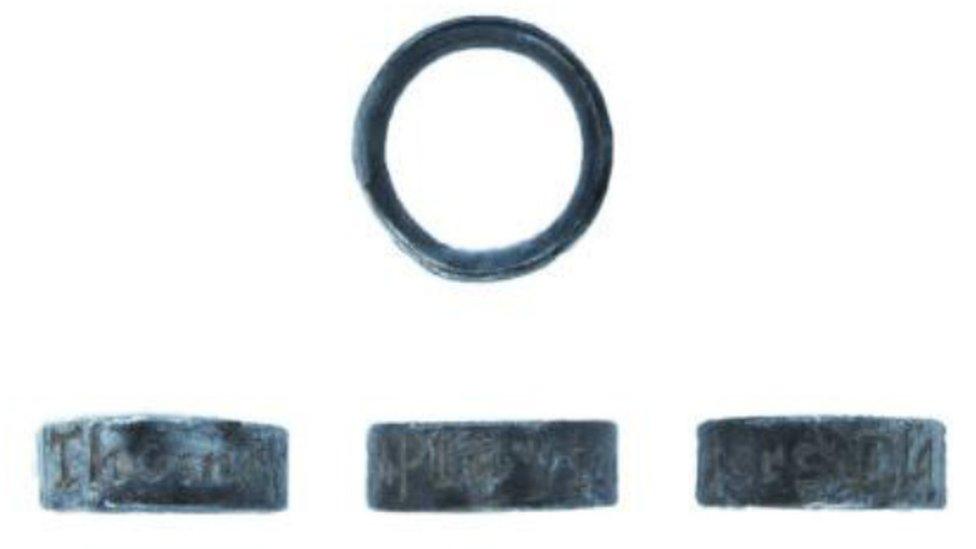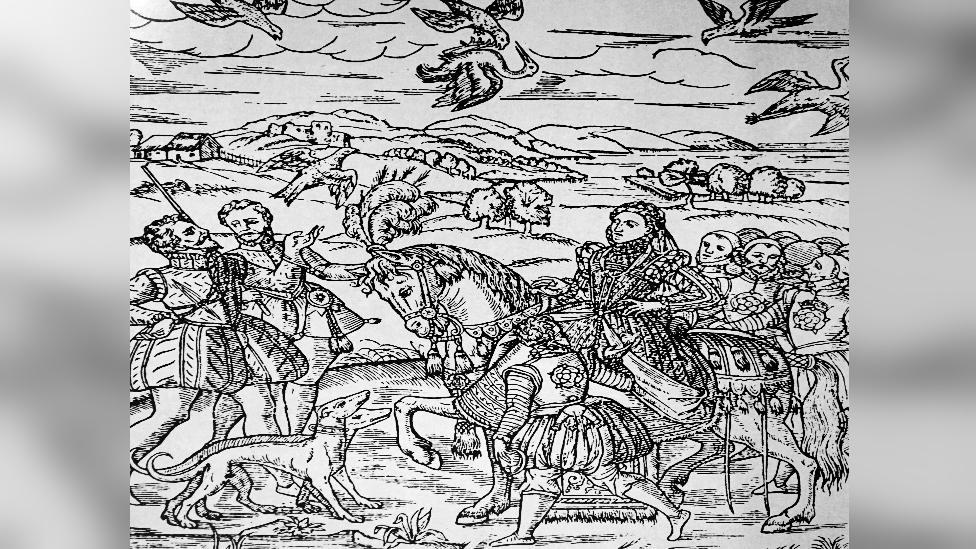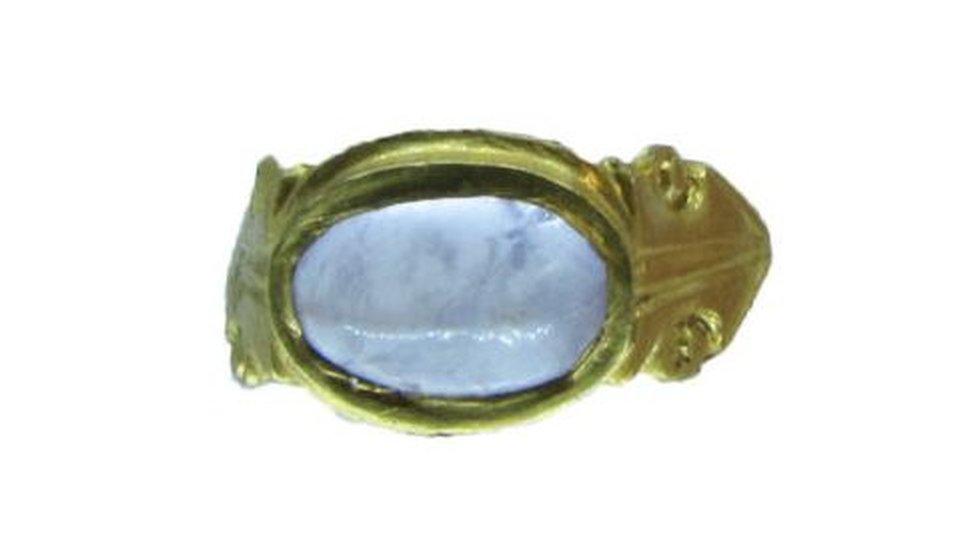Detectorist found 17th Century hawking ring linked to Suffolk baronet
- Published

The silver vervel belonged to Thomas Playters, 1st Baronet of Sotterley
A 17th Century silver hawking ring found by a metal detectorist in a field has been linked to a Suffolk baronet, researchers have found.
The vervel, which dates back to the 1600s, is believed to have belonged to Thomas Playters, the first Baronet of Sotterley, near Beccles in Suffolk.
It was dug up in a field in Wix, near Harwich in Essex, last year.
The ring, which is engraved with its owner's name, would have attached a hunting bird to its perch using a line.

The vervel would have encircled a bird's leg and had a line attaching it to its handler or perch, similar to this peregrine falcon
Sophie Flynn, finds liaison officer for the Portable Antiquities Scheme (PAS) at Colchester Museum, described it as a "markedly personal artefact" which gave us a "direct link to an individual from the past".
"The size and style of lettering suggests the vervel dates to the 1600s, and was probably used on a falcon or other raptor," she said.
"The inside of the band is rounded which was meant to cause minimal discomfort and reduce chance of injury to the bird."
Hawking was an aristocratic pastime which enjoyed a renaissance in the 17th Century, she said.
The vervel is 11.8mm in diameter with a band height of 3.9mm.

Hawking was popular during the Tudor period and Elizabeth I (who ruled England 1558-1603) is pictured here
Colchester and Ipswich Museum Service hopes to acquire the item after it was declared treasure at an inquest at Essex Coroner's Court.
A person who finds treasure usually gets a financial payment under the Portable Antiquities Scheme, often sharing it with the landowner who grants them permission to search on their property.
The Playters baronets were a Suffolk line, first established by James I in 1623, according to historians, external.
The fifth Baronet, Sir John Playters, served as High Sheriff of Suffolk in 1728 before the title became extinct with the death of Sir William John Playters in 1832.
- Published1 November 2019
